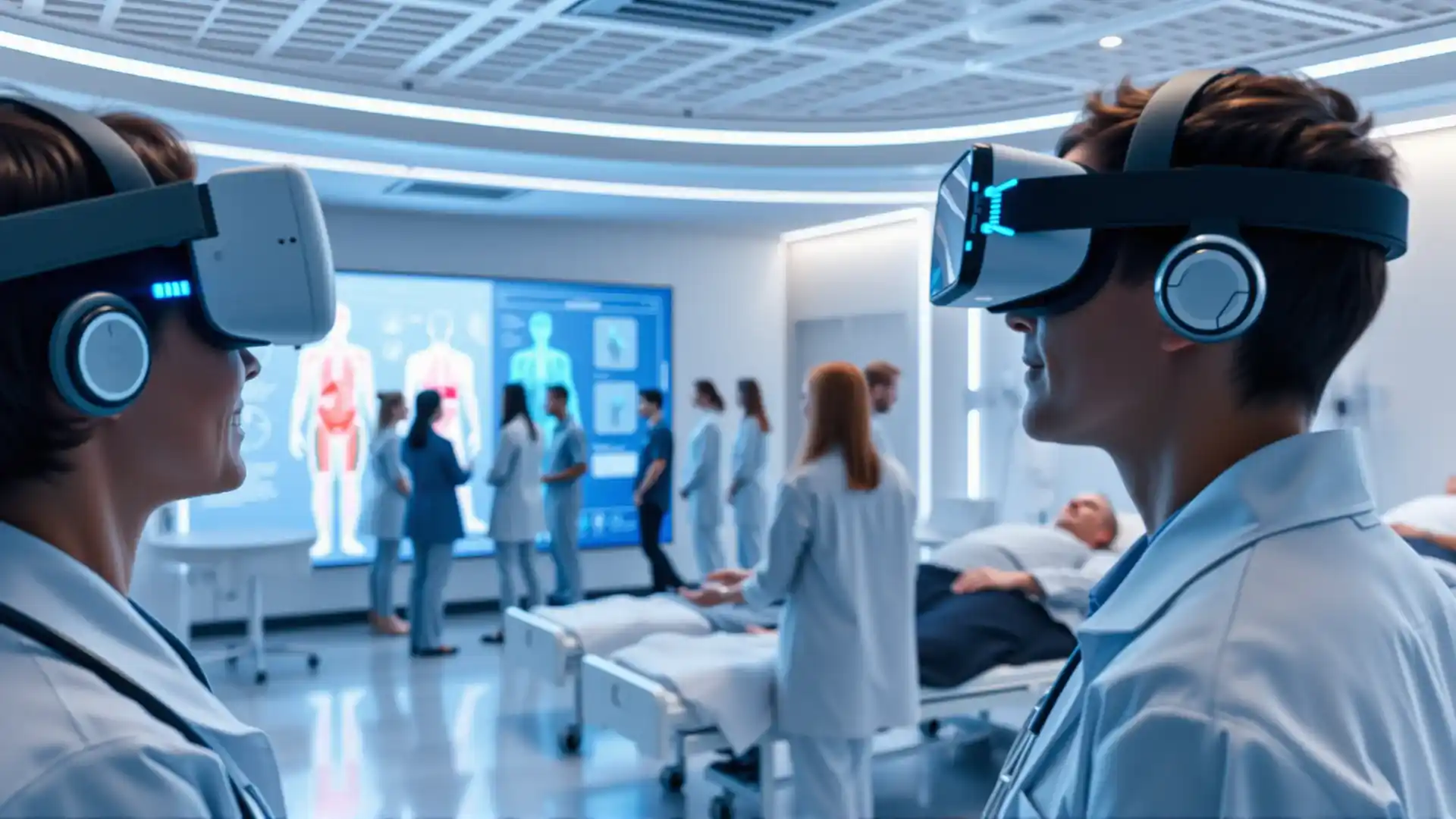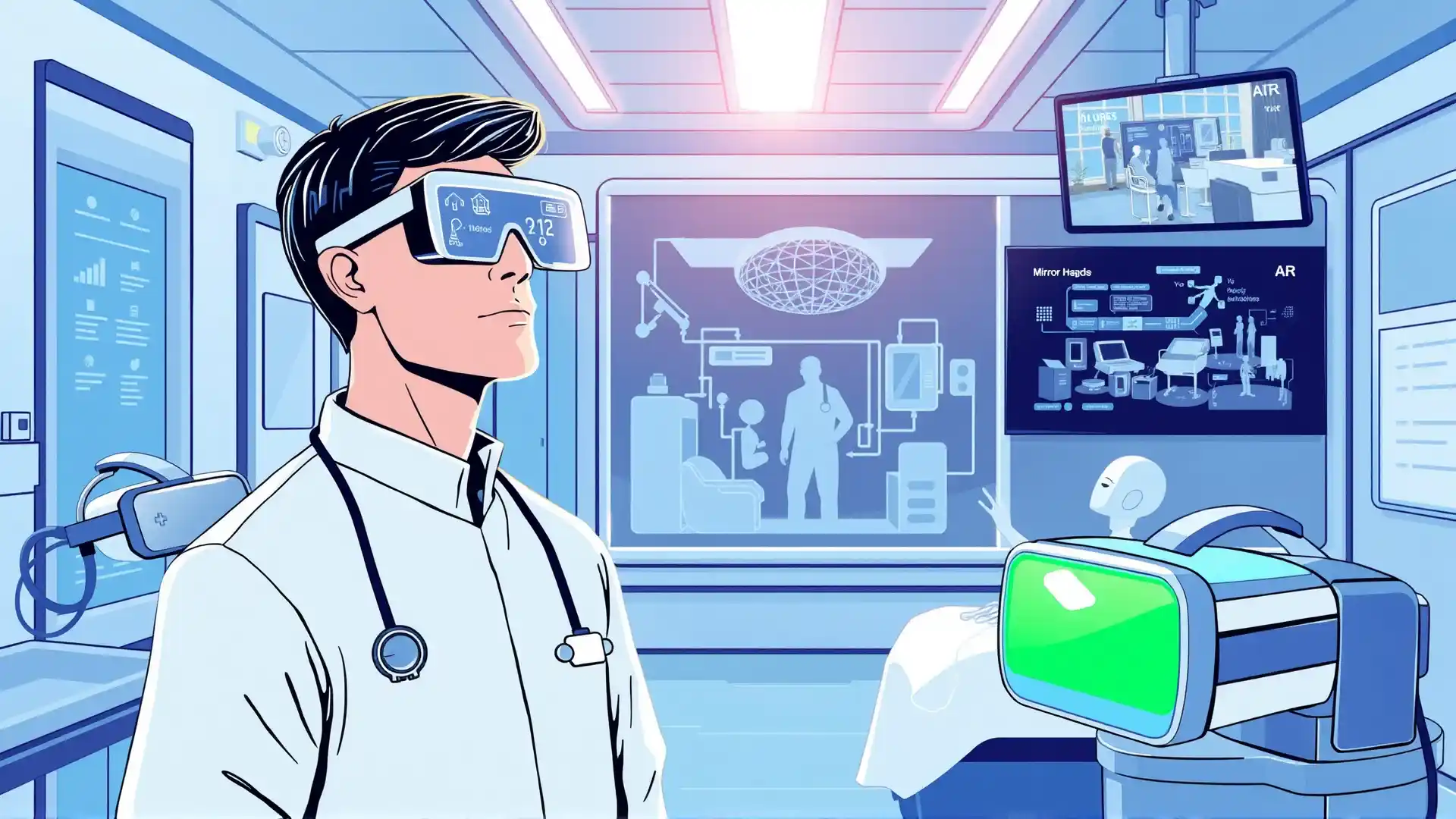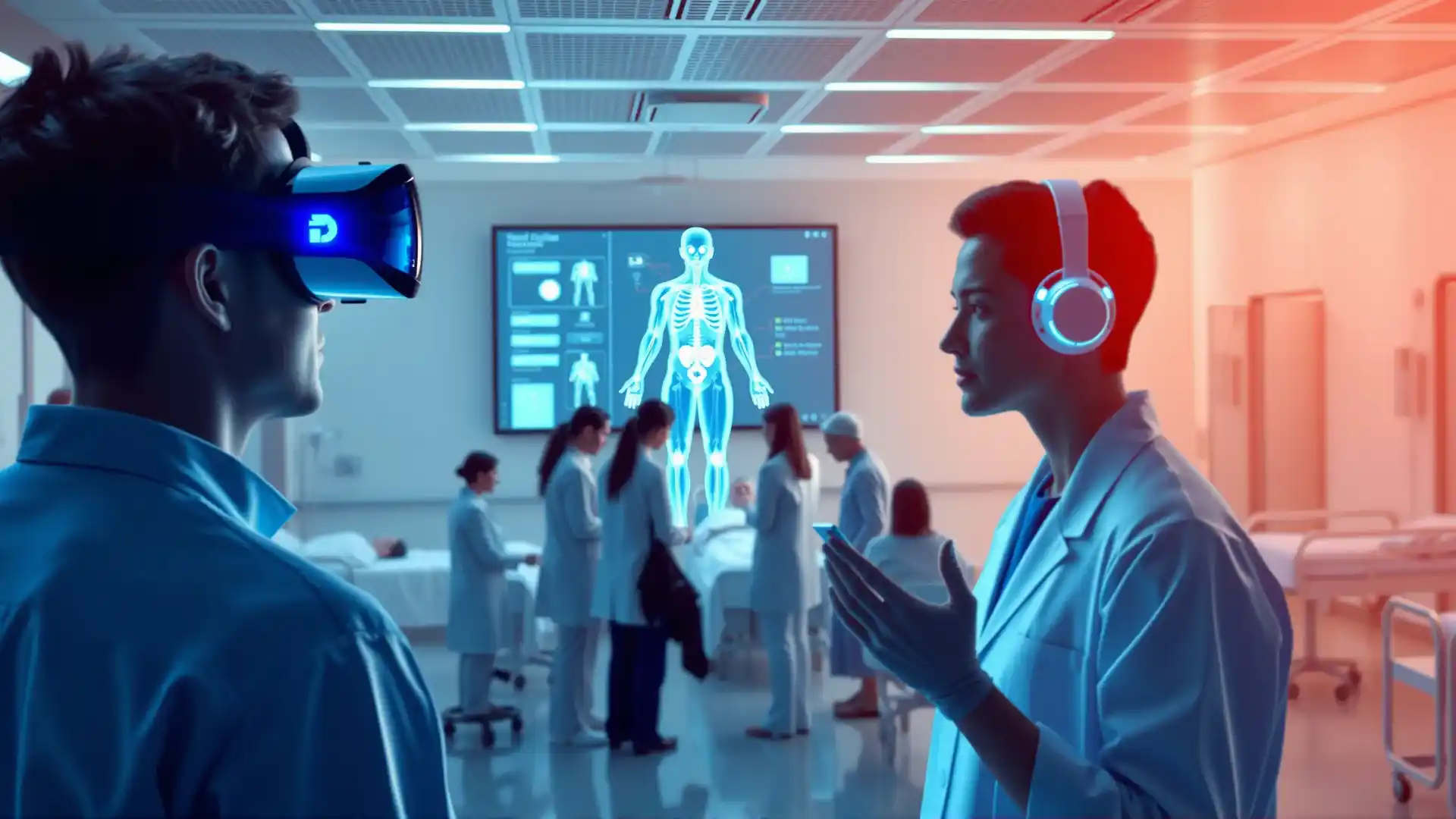Table of Contents
As the metaverse continues to evolve, its impact on healthcare is becoming increasingly evident. Innovative companies are leveraging this technology to achieve a rare trifecta – increased access, better outcomes, and lower costs – in areas such as medical imaging, mental health, and medical training. Despite being still in its early stages of development, the metaverse is already transforming various aspects of healthcare.
The metaverse in healthcare extends beyond just gaming and entertainment. The underlying technologies have real-world applications that can revolutionize patient care. These include extended reality (XR), Web3 technologies, and M-worlds – live virtual “places” where users gather and create content. XR, in particular, is being used in several diagnostic and therapeutic applications, as well as in medical training and meetings.
Unlocking the Power of Metaverse in Healthcare
The metaverse can unlock significant value for healthcare companies in multiple ways:
- Improving access to care: Connecting patients and providers regardless of location
- Enhancing diagnostics and surgery: Advanced technologies improving accuracy and quality
- Streamlining Healthcare Operations: The metaverse in healthcare can lead to significant cost savings through improved efficiency in care delivery, medical training, and data management.
- Opening new possibilities: For storage, sharing, and access to patient, claims, and provider data
- Enhancing the experience: Of patients and insurance plan members with new offerings and diversifying revenues
- Lowering operating costs: By streamlining functions such as recruiting, learning and development, and payment
Startups are driving much of this development activity. Several innovative companies have already developed viable products that are being successfully used by major healthcare providers, showcasing the potential for widespread adoption of these solutions.
For example, XR-based mental-health therapies – many of which are FDA-approved – are being used to treat anxiety, phobias, PTSD, and general stress. Examples include Sympatient’s VR-based anxiety treatment addressing agoraphobia, social phobia, and panic disorders through exposure therapy.

As the metaverse continues to evolve, healthcare providers and payers need to engage with these developments strategically. This includes defining their vision for how next-generation technologies can benefit them and their patients. By understanding the range of use cases already in the market and those under development, they can determine where to invest strategically and prioritize their use case development.
The Future of Healthcare: A Metaverse-Driven Transformation
As we move forward, it’s clear that the metaverse will continue to revolutionize healthcare. With its potential for increased access, better outcomes, and lower costs, this technology is poised to transform various aspects of patient care. As providers and payers navigate these developments, they must prioritize innovation and transformation.
By embracing the power of metaverse in healthcare, we can unlock new possibilities for patient engagement, education, and care delivery. It’s time to harness the potential of this transformative technology and shape a future that is more efficient, effective, and beneficial for all.
Types of Metaverses in Healthcare
In this comprehensive review, we focus on the four distinct types of metaverse in healthcare that are transforming education and delivery. We explore their potential, limitations, advantages, and applications in healthcare settings.
I. Augmented Reality (AR) Metaverse in Healthcare
Enhancing Learning Experiences with AR
Augmented reality(AR) technology overlays digital information onto real-world environments, creating an immersive experience that blends the physical and virtual. This innovative approach allows users to access contextual data, visual guides, and interactive elements in real time, enhancing learning experiences and simplifying complex procedures.

II. Mirror World Metaverse in Healthcare
Reflecting Reality with Enhanced Simulations
The mirror world represents a sophisticated digital replica of reality, offering an accurate and detailed simulation of physical environments. By leveraging advanced virtual models, healthcare professionals can create immersive training scenarios, conduct virtual consultations, and analyze patient data in a highly realistic setting.
III. Virtual Reality (VR) Metaverse in Healthcare
Immersing Patients in Immersive Experiences
Virtual reality technology transports users to entirely digital worlds, allowing them to interact with virtual environments, avatars, and objects in a fully immersive manner. In healthcare, VR can be used to create calming environments for anxious patients, provide interactive educational content, and enhance therapy sessions.

IV. Lifelogging Metaverse in Healthcare
Tracking Patient Journeys with Precision
The lifelogging metaverse represents a digital record of patient experiences, tracking health outcomes, medical histories, and treatment plans in real time. By leveraging this technology, healthcare professionals can provide personalized care, monitor patient progress, and optimize treatment strategies for improved outcomes.
Conclusion
As the healthcare industry continues to evolve, the need for innovative solutions has never been greater. The metaverse offers a powerful toolset for transforming patient care, improving health outcomes, and enhancing educational experiences.
By embracing this technology and working together to address its challenges, we can unlock the full potential of the metaverse in healthcare and create a brighter future for patients and practitioners alike.





